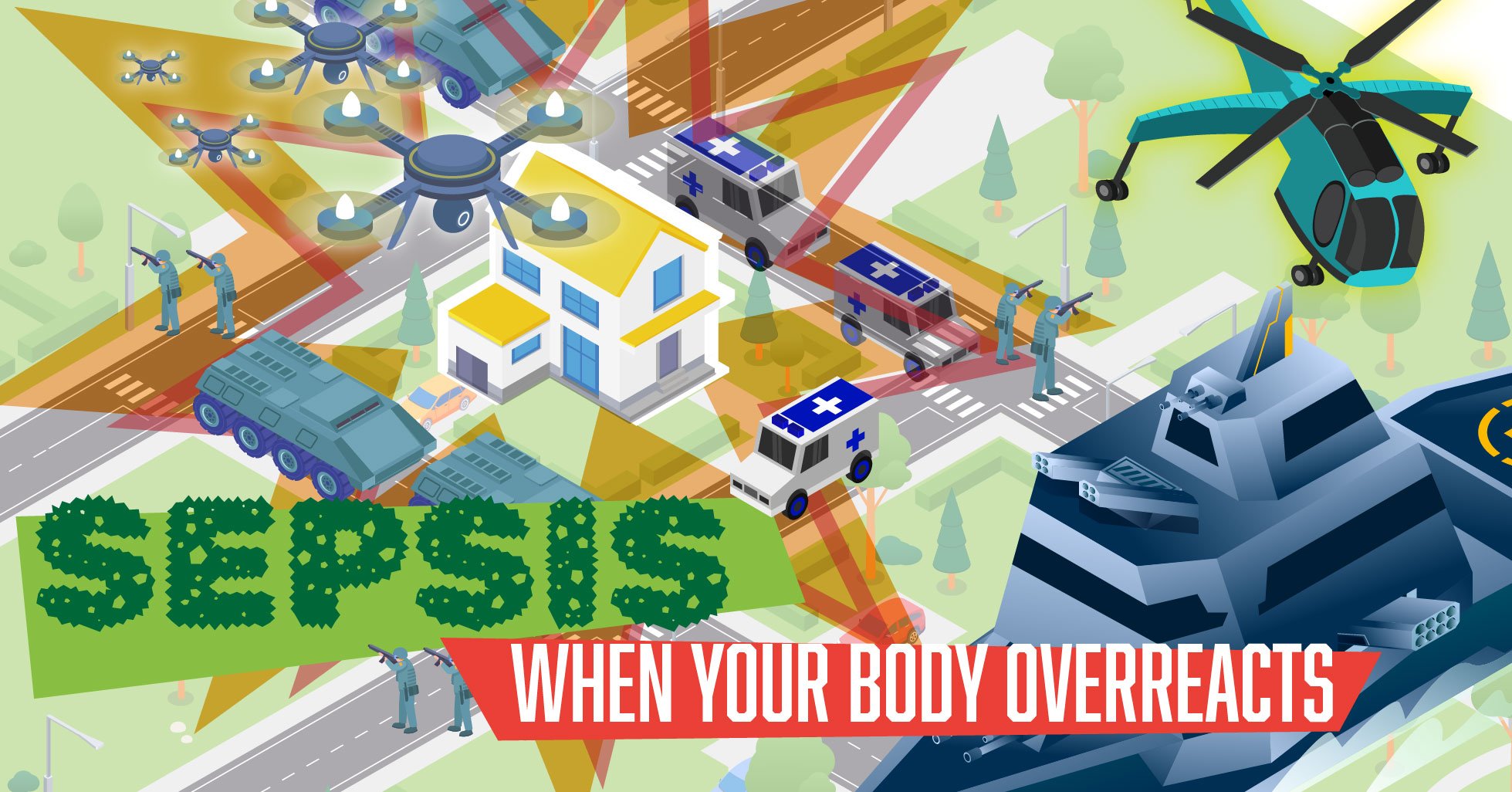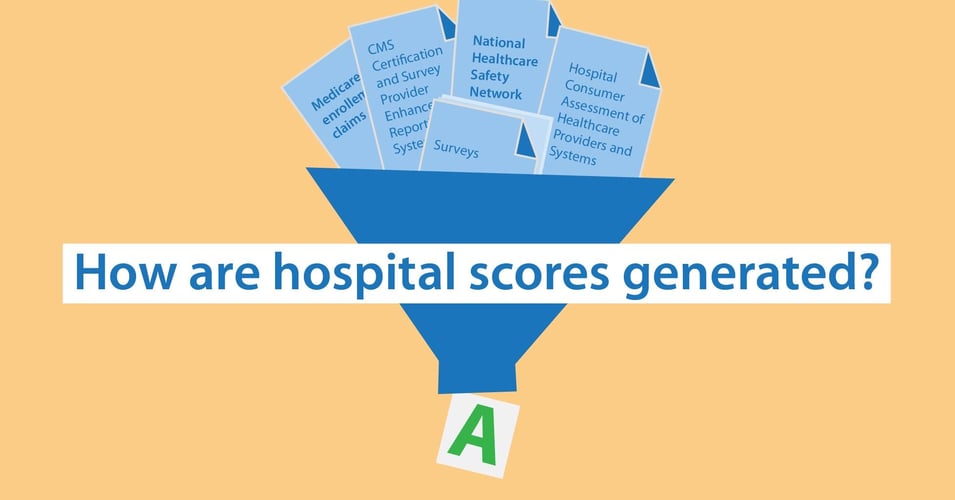Sepsis: When Your Body Overreacts

 How can a simple infection lead to organ failure and death in the span of a few days? The answer lies not in the pathogen causing the infection (although it may play a role), or even the severity of the infection, but rather in the body's overreaction to the infection. In today's post, we will look at what causes sepsis, the early warning symptoms, as well as what is being done to prevent deaths due to this frightening condition.
How can a simple infection lead to organ failure and death in the span of a few days? The answer lies not in the pathogen causing the infection (although it may play a role), or even the severity of the infection, but rather in the body's overreaction to the infection. In today's post, we will look at what causes sepsis, the early warning symptoms, as well as what is being done to prevent deaths due to this frightening condition.
What is sepsis? Sometimes, the body will have an exaggerated inflammatory response to a stressor leading to Systemic Inflammatory Response Syndrome (SIRS). An inflammatory response is a part of our innate immune systems, which evolved to increase blood flow, raise body temperature, and send white blood cells in order to avoid infection and promote healing. SIRS, a widespread ("systemic") response that can overwhelm the body, can be caused by trauma, loss of circulation, malignancy, and other conditions. When SIRS is caused by an infection, that type of SIRS is called sepsis or septicemia, which is sometimes referred to as "blood poisoning." Sepsis can develop from infections in the respiratory, urinary tract, gastrointestinal, and central nervous systems as well as skin infections.
What are the signs of sepsis? Sepsis is so dangerous because it can happen so fast, and its initial stages looks just like a normal immune system response. However, there are key red flags that demand an immediate trip to the doctor (and specifically asking the doctor to rule out sepsis).
Some measurements and observations can be made at home:
- Very high or very low body temperature (above 100°F or below 98°F); shivering or sweating.
- Very fast heart rate (more than 90 beats per minute). How to measure here.
- Very high breaths per minute (more than 20 breaths per minute). How to measure here.
- Confusion or disorientation.
- Rash.
Doctors will also check for:
- Low blood pressure.
- Partial pressure of CO2 less than 32 mmHg (CO2 in blood)
- Leukocyte (white blood cell) counts greater than 12000 or less than 4000/microliters or over 10% immature forms or bands
What happens during sepsis? Essentially, the body hurts itself with processes that evolved to help. First, the body can release too many cytokines, causing an excessive inflammatory response that destroys body tissues. This exaggerated response (also called a "cytokine storm") can be due to a pathogen whose chemical presence sets off a cascade of immune responses including blood clots and weakened blood vessels that can lead to organ failure and even death. A helpful analogy is to imagine a scenario in which a single intruder manages to trip so many security systems in a house that firefighters, SWAT teams, gas company emergency teams, and others descend upon a house with powerful hoses, battering rams, bulldozers, and emergency foam to the point that the house is essentially destroyed. Everyone was doing their job, but it was too intense for what was needed.
Second, the body pulls back on the immune response to try to calm things down. This suppressed immune system puts the patient at risk for any subsequent infections, and this immune suppression can last for days and even weeks after the initial response. To continue the analogy of the home intruder, imagine a house that has been evacuated after the intense response, with none of the security systems back in place: Anyone could re-enter the home and loot or vandalize without any response whatsoever. Sadly, this stage of sepsis can permanently impair a person's ability to fight infections.
What is being done to treat and prevent sepsis? 1 in 5 deaths worldwide is caused by sepsis, and 1.7 million American adults develop sepsis each year. 1 in 3 hospital deaths in the US are as a result of sepsis, and an estimated 250,000 Americans die from sepsis each year. Why? Despite all our medical knowledge, there is no universal treatment for the condition. A variety of bundled approaches can minimize harm to organs, promote blood flow, fight off the infective pathogen, and drain harmful fluid build-up, but there is no single, proven treatment that fits most cases. There has been a recent push amongst federal and local health organizations to increase awareness of sepsis, since time is of the essence. Preventing infections in the first place is very effective, which includes practicing good hand hygiene, cleaning wounds (however small) thoroughly and seeking medical attention for any troubling symptoms.
Sepsis as a result of healthcare-associated infections (HAIs) results in significant mortality. Globally, 23% of sepsis cases are caused by a hospital-acquired infection. Shockingly, almost half (48.7%) of sepsis cases in ICU patients have a hospital origin. On the one hand, individuals with weaker immune systems and who take antibiotics are at greater risk of getting an infection, and therefore at greater risk of developing sepsis. On the other hand, acquiring an infection while receiving medical care is by no means inevitable, and many studies demonstrate that steps can be taken by the facility to reduce, or even eliminate, the spread of infections. The prevention steps are the same as those listed above for the general public - hand hygiene, cleaning wounds, monitoring of symptoms - but a hospital has even more ways to protect vulnerable patients from pathogens. Simply by installing biocidal materials on high-touch surfaces, for example, a hospital can reduce the available bioburden (pathogen contamination) by up to 80%, resulting in significantly less opportunity for transmission of the pathogens to the patient. Just by replacing overbed tables and bed rails with biocidal materials, a hospital can bring the levels of contamination down to a benign, manageable level. And every step that reduces the risk of infection also reduces the risk of sepsis. (At this point, we would go so far as to say this type of investment in a continuous and permanent intervention is a no-brainer!)
![EOScu Logo - Dark - Outlined [07182023]-01](https://blog.eoscu.com/hubfs/Eoscu_June2024/Images/EOScu%20Logo%20-%20Dark%20-%20Outlined%20%5B07182023%5D-01.svg)




